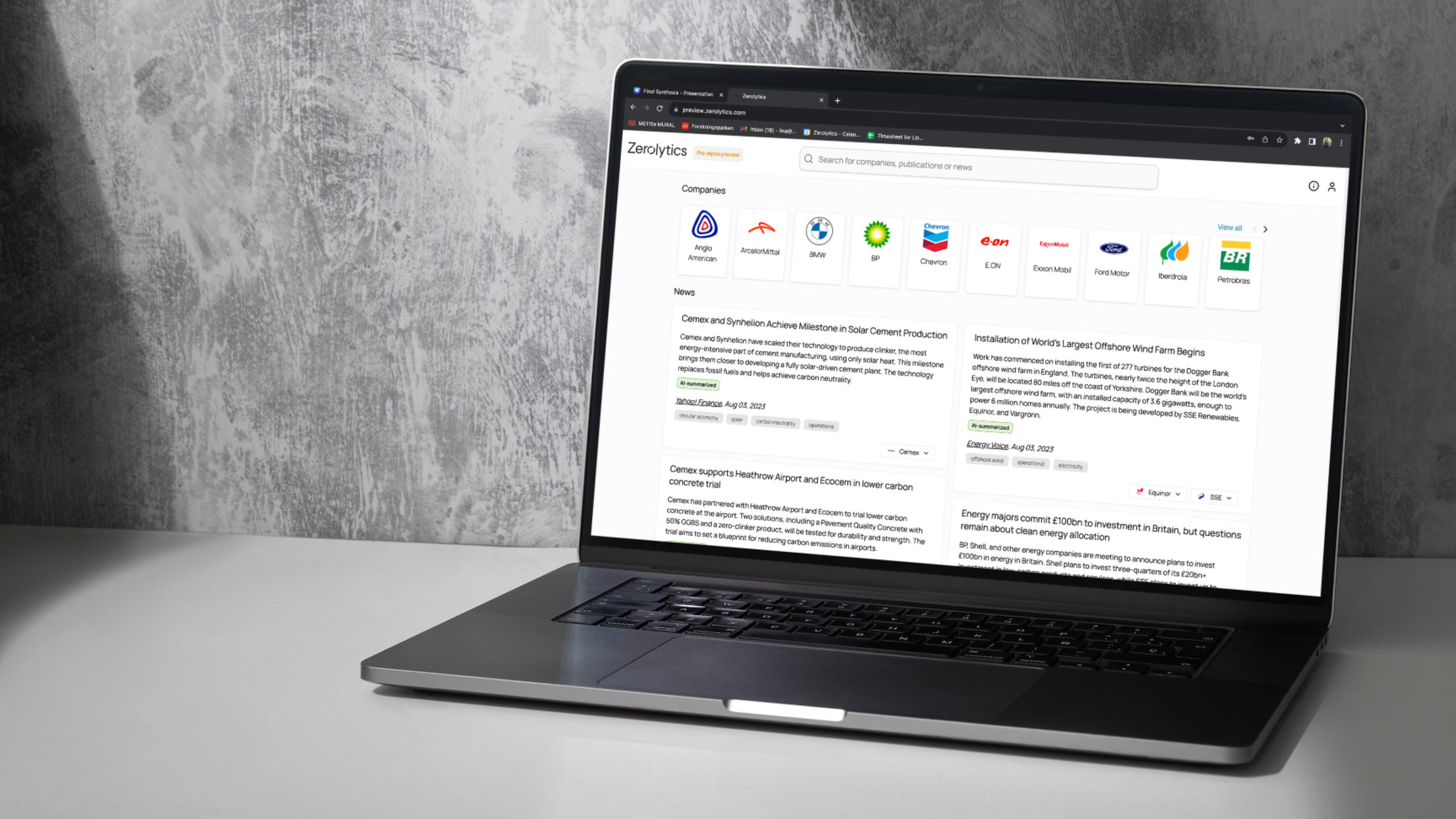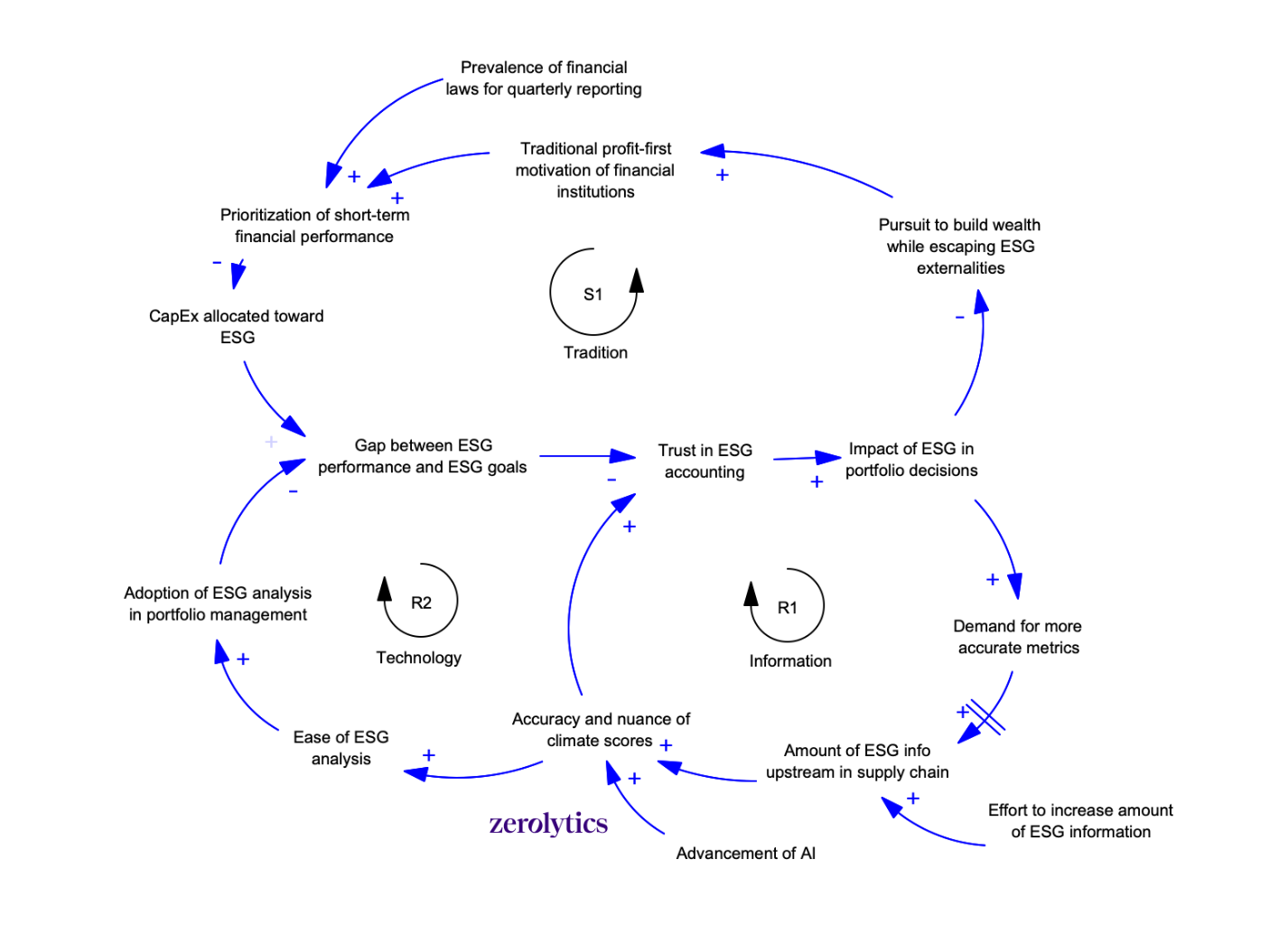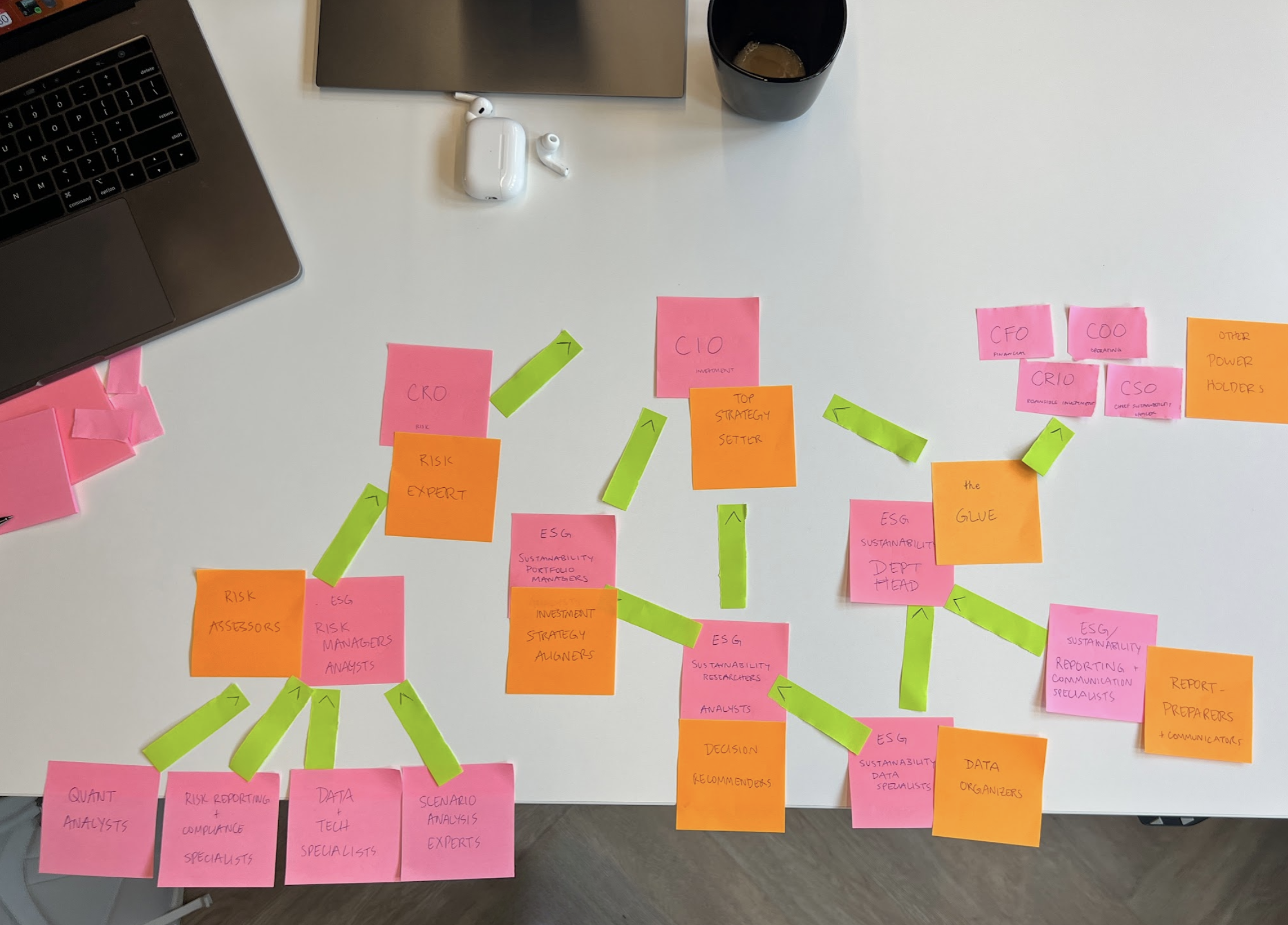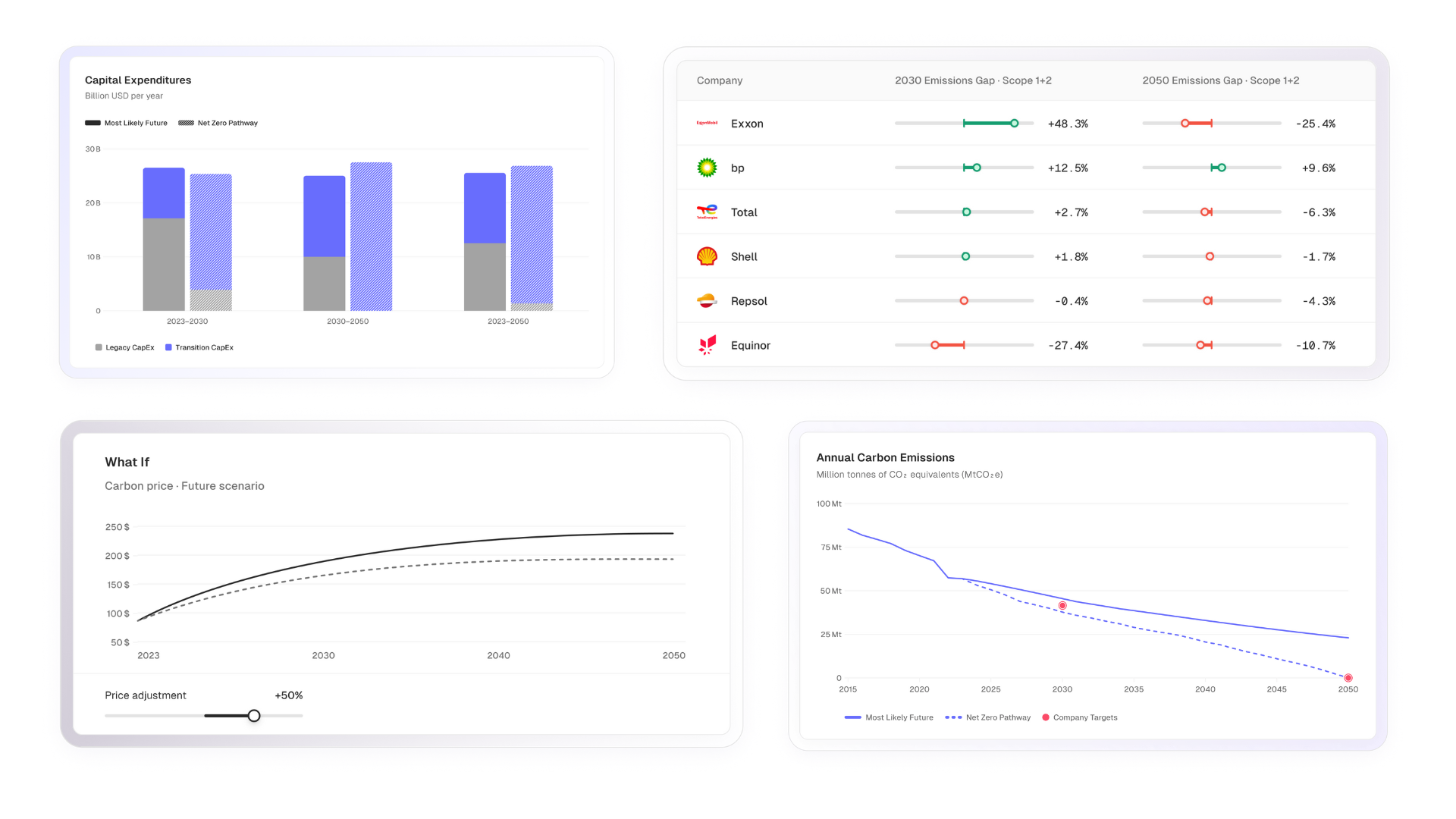Zerolytics
A platform to predict and assess the credibility of net-zero energy commitments.
Client
Zerolytics AI
My role
UX Designer
Location
Oslo, Norway

Problem Statement
Financial institutions are facing increasing pressure from stakeholders to prioritize ESG factors. Investors need reliable climate risk forecasts to make informed CapEx decisions and assess the long-term viability of sustainability commitments. Zerolytics offers science-based models for benchmarking and predicting climate risk.
My Role
As UX designer, I led the product team to (1) identify our target user (2) understand which analytics and predictions were most useful, and (3) design the product interface.

UX Research
Through personal referrals, cold-calling, and Linkedin-messaging, I gathered a list of 20 actors in Norwegian asset management companies from analysts to CEOs to interview in order to understand who who makes climate investment decisions and how these decisions are made. I constructed the causal-loop diagram above to illustrate my findings around systemic industry issues, and where Zerolytics is positioned to create change.
Below is my mental model of the reporting hierarchy in the largest Norwegian asset management firms. This understanding identified portfolio analysts as the best user fit for the Zerolytics offerings.

User Insights
Open-ended user interviews revealed a strong skepticism of current climate scoring solutions—analysts don't trust "black-box" algorithms and prefer to do the heavy lifting themselves to understand the calculations, despite the time-consuming effort.
1 Analysts want to see the logic behind AI assessments. UX must allow for easy source material access.
2 Construct UI around information hierarchy, from "at a glance" to "in-depth analysis."
3 Analysts don't need day-to-day changes in climate risk from news analysis. Tuck these away and provide an instant at-a-glance view, with warning bells when necessary.
Rapid Prototyping
I held weekly feedback meetings with analysts to understand if and when they would use the features I designed. I narrowed down features to the below.
